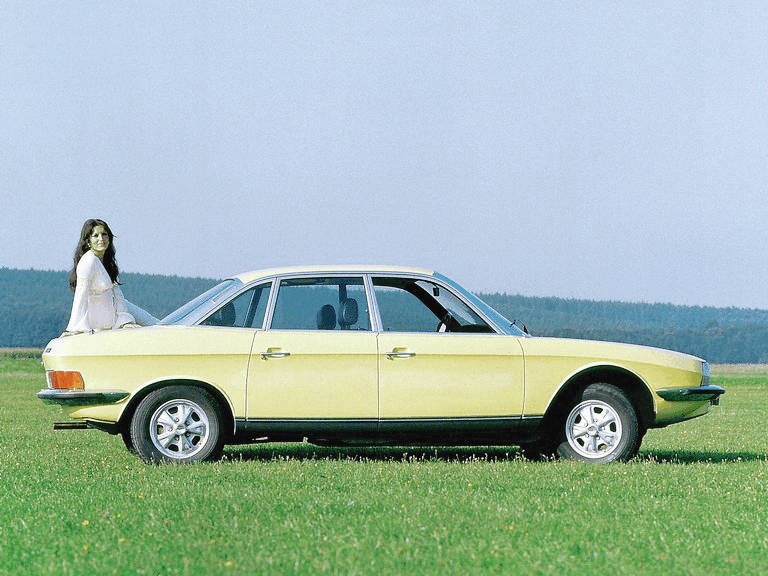The NSU company of Neckarsulm, Germany, (NSU’s name was a derivative of Neckersulm) began manufacturing knitting machines in 1873, later going into bicycles and motorcycles. Switching to cars in 1905 its first one was a Belgium Pipe model built under licence.
By 1906 NSU had developed its own car and would make a variety of models until 1931 when it ceased car production to concentrate on motorcycles, at which it excelled.
NSU returned to building cars in 1957 with the tiny the NSU Prinz sedan powered by a 598 cc air-cooled, two-cylinder, rear-mounted engine. It was a moderate success, and from it evolved the diminutive NSU Sport Prinz coupe and open Spider version that arrived soon after. By 1965, the Wankel Spider was a real automotive pioneer — the world’s first production car with a Wankel rotary engine.
The rotary was the brainchild of German engineer Felix Wankel who was convinced there was a more efficient way to produce power than by reciprocating pistons. He envisaged one continuous rotary motion, and patented his rotary internal combustion engine in 1934. He later joined NSU where it was finally introduced to the world.
Instead of conventional round pistons reciprocating in cylinders, Wankel used a triangular-shaped rotor turning inside a casing approximately the shape of a fat figure eight. By travelling a concentric path, voids in the faces of the triangle created chambers of expanding and contracting volume which achieved the Otto engine intake, compression, power and exhaust cycles. The rotor rotated the crankshaft.
Using the experience gained with the world’s first Wankel engined car, NSU followed it with the NSU Ro80, a larger and much more ambitious undertaking.
The Ro80 was introduced as a 1968 model and is the one for which the company would be best remembered. The 115 horsepower created by the two-rotor version of the Wankel was calculated to have a displacement of 2.0 litres.
The Ro80 was an intermediate-sized sedan with a relatively long 2,857 mm (112.5 in.) wheelbase. The sloping nose and wedge-shaped body developed in the Stuttgart Polytechnic Institute’s wind tunnel had a coefficient of aerodynamic drag of 0.355, a good figure at a time when air resistance was not a high priority.
The windshield curved side to side and top to bottom, and large side windows with slim pillars provided superb visibility. The Ro80’s modern styling could be considered at least a decade ahead of established manufacturers, no mean feat for a relatively small company.
Under its shapely skin was such advanced technology as four wheel independent suspension via struts and coil springs, four-wheel disc brakes and power rack-and-pinion steering. Power went to the front wheels through a three-speed, semi-automatic transmission.
But the technical highlight was the Wankel engine. It was smooth, quiet and vibrationless with performance that was good, if not outstanding. Zero to 97 km/h (60 mph) time for the 1,256 kg (2,770 lb) sedan was in the 13 second range. Top speed was about 177 km/h (110 mph).
Unfortunately, the Ro80’s rotary engine proved to be its Achilles heel. It soon developed problems, usually failure of the rotor tip seals. These seals, equivalent to piston rings, were a rotary’s critical components.
Although NSU had more rotary engine experience than anyone (others were experimenting with it) their limited resources didn’t allow proper development. The Ro80 was a bold and innovative step for a relatively small manufacturer but economic pressures had forced it to market too early.
In spite of NSU’s attempt to defend its product by generously honouring warranties, further adding to their financial woes, the Ro80 developed a reputation for unreliability. The failing company was rescued in 1969 when it was bought by Volkswagen who folded it in with its other recent acquisition Auto Union, ultimately Audi.
Constant development and improvements gradually increased the Wankel engine’s reliability, and surprisingly the Ro80 would be built for 10 years. When in was discontinued in the spring of 1977 total production had reached 47,400.
The NSU Ro80 was an advanced and daring design that was ahead of its time. Once its engine problems surfaced, however, its reputation was damaged to the point where it could never fully recover.
Japan’s Mazda, another Wankel pioneer, was almost dealt the same fatal blow. Mazda was building the engine under licence and fitting it to their cars, but when problems arose in the 1970s they had to fall back on the reciprocating piston engines for survival.
In spite of this, their engineering genius Kenichi Yamamoto persisted and developed the rotary into a reliable engine which Mazda marketed in the popular RX-7 and RX-8 sports cars.
Although the NSU Ro80 was a bold and progressive design from a small company, it was marred by early engine problems from which it could not recover.



